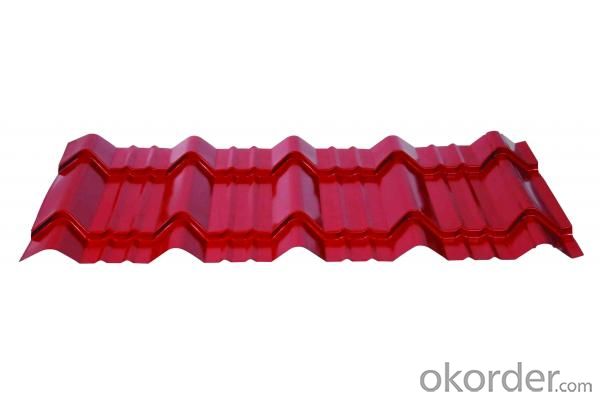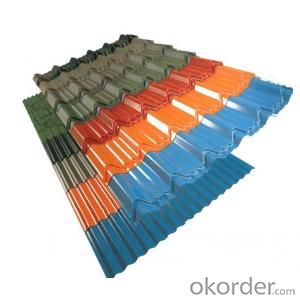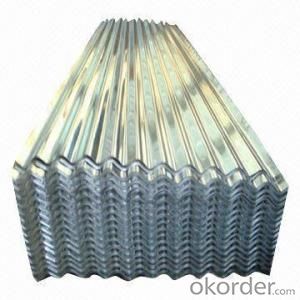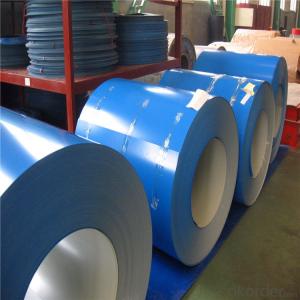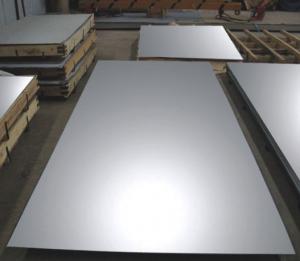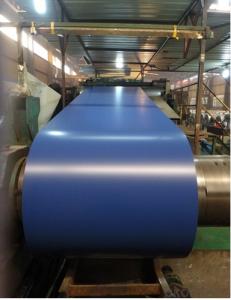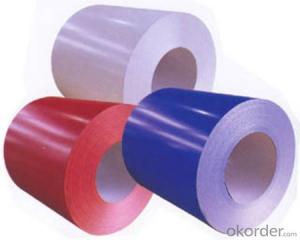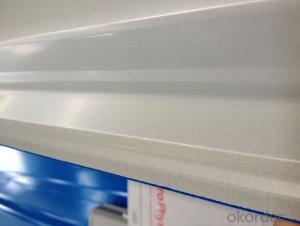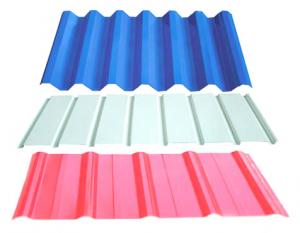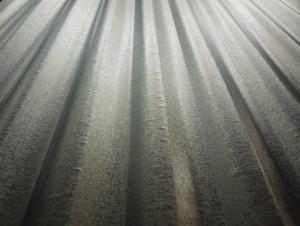Building Material 0.4mm Thick PPGI Metal Sheet
- Loading Port:
- Tianjin
- Payment Terms:
- TT OR LC
- Min Order Qty:
- 300 m.t.
- Supply Capability:
- 1500 m.t./month
OKorder Service Pledge
OKorder Financial Service
You Might Also Like
Building Material 0.4mm Thick PPGI Metal Sheet
Main Structure for Building Material
Standard: AISI, ASTM, BS, DIN, GB, JIS
Grade: Q235,Q195,Q255,Q275
Thickness: 0.12-0.80mm
Surface Treatment: Galvanized
Application: for building construction
Width: 600-1250mm
Length: by coil
ppgi width: 600mm-1250mm
ppgi thickness: 0.12mm-0.80mm
zinc coated: 30g-120g
ppgi face: 15-25u
ppgi back: 5-13u
Advantages:
Rich experiences------------- more than 13 years experience in steel industry.
Golden Supplier-----factory recognized ISO certificates etc.
Professional sales team------International trade teams for your service .
7/24 service for you------------all questions will be deal with within 24 hours .
Description for Building Material
PPGI Coil | Width | Thickness | Zinc Thickness | Face | Back |
600mm-1250mm | 0.12mm-0.8mm | 30-120g | 15-25u | 5-13u | |
Color | Raul color card , or your model color | ||||
Coil Weight | 3Ton--5Ton . | ||||
Packing | standard export packing . | ||||
Payment Terms | T/T, L/C ,Cash , West Union , Paypal | ||||
Trade Terms | FOB , CNF/CFR, CIF | ||||
Loading Port | Qingdao /Caofeidian /Tianjin ,China | ||||
Delivery Time | 25days base on order quantity | ||||
FAQ
WHY SHOULD YOU CHOOSE US:
Stable quality ----continous casting hot rolled production techenic, strictly quality control system.
Lower price -------Not the cheapest but the lowest price at the same quality .
Good service -----Satisfactory service within 24hours.
Delivery time ------15-25days for the mass production .
Discount---------------discount base on monthly large quantity purchase in long term.
Picture:
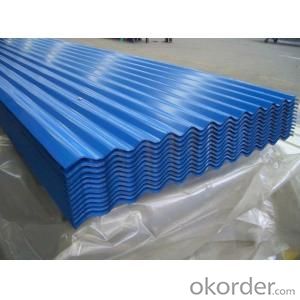
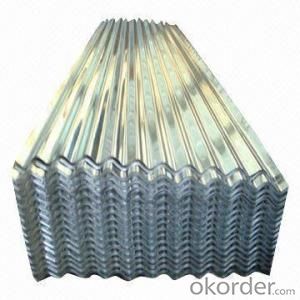
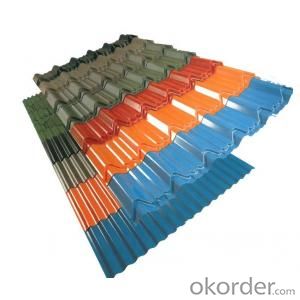
- Q: What are the different types of surface treatments available for steel sheets?
- There are several different types of surface treatments available for steel sheets, each serving a specific purpose and offering unique benefits. 1. Hot-dip galvanizing: This is a widely used method where steel sheets are dipped in a bath of molten zinc, creating a protective coating that prevents corrosion. Hot-dip galvanizing provides excellent corrosion resistance and durability. 2. Electro-galvanizing: In this process, a layer of zinc is electrochemically deposited onto the steel sheets, creating a thin, uniform coating. Electro-galvanizing provides good corrosion protection and is often used for decorative purposes. 3. Powder coating: This surface treatment involves applying a dry powder onto the steel sheets and then curing it using heat. Powder coating provides a durable and attractive finish, offering protection against corrosion, UV rays, and chemicals. 4. Paint coating: Steel sheets can be coated with various types of paints, including epoxy, polyurethane, and polyester. Paint coatings provide aesthetic appeal and offer protection against corrosion and weathering. 5. Phosphating: This treatment involves applying a phosphate coating to the steel sheets, which enhances their corrosion resistance and improves paint adhesion. Phosphating is often used as a pre-treatment before painting or powder coating. 6. Chromate conversion coating: Also known as chromating or passivation, this treatment involves applying a thin layer of chromate onto the steel sheets. Chromate conversion coatings enhance corrosion resistance and improve paint adhesion. 7. Anodizing: Although primarily used for aluminum, anodizing can also be applied to steel sheets. This process involves creating an oxide layer on the surface of the steel, which enhances corrosion resistance and provides a decorative finish. 8. Pickling: This treatment involves immersing the steel sheets in an acidic solution to remove scale, rust, and other impurities. Pickling leaves the steel sheets with a clean, smooth surface, ready for subsequent treatments or processes. Overall, the choice of surface treatment for steel sheets depends on the intended application, desired appearance, and level of corrosion resistance required.
- Q: How are steel sheets protected during storage in humid environments?
- Corrosion prevention is a common practice used to protect steel sheets stored in humid environments. This involves implementing various measures to minimize the steel sheets' exposure to moisture and humidity, which are the main contributors to corrosion. One effective method is applying a protective coating to the steel sheets. This coating acts as a barrier between the steel and the surrounding moisture, preventing direct contact and reducing the risk of corrosion. Depending on the specific requirements and conditions of the storage environment, different types of coatings, such as paint, oil, or specialized corrosion-resistant coatings, can be used. In addition to protective coatings, steel sheets can also be stored in a controlled environment with regulated temperature and humidity levels. This helps to reduce the amount of moisture in the air surrounding the steel sheets, thereby decreasing the likelihood of corrosion. Dehumidifiers or climate-controlled storage facilities can be utilized to achieve this controlled environment. Proper handling and packaging of the steel sheets also play a crucial role in their protection during storage in humid environments. It is important to store the sheets in a manner that allows for adequate airflow and ventilation to minimize moisture accumulation. Additionally, packaging materials, such as plastic wraps or moisture-resistant packaging materials, can provide an extra layer of protection against moisture. Regular inspection and maintenance are essential to ensure the ongoing protection of steel sheets during storage in humid environments. This includes regularly checking for signs of corrosion or damage and promptly addressing them to prevent further deterioration. In conclusion, a combination of protective coatings, controlled storage environments, proper handling, and regular maintenance are necessary to safeguard steel sheets from the negative effects of humidity and moisture during storage.
- Q: What are the different surface treatments for steel sheets?
- There are several different surface treatments available for steel sheets, including galvanizing, powder coating, painting, and plating. These treatments help to protect the steel from corrosion, improve its appearance, and enhance its durability.
- Q: What is the process of anodizing steel sheets?
- The process of anodizing steel sheets involves several steps to create a protective surface layer on the steel. First, the steel sheets are cleaned thoroughly to remove any dirt, grease, or other contaminants. This is typically done using a degreasing agent or by immersing the sheets in a solvent bath. Once the sheets are clean, they are then rinsed with water to ensure all traces of the cleaning agents are removed. This step is important to prevent any interference with the anodizing process. Next, the steel sheets are placed in an electrolyte bath, which is a solution containing an acid, such as sulfuric acid. The sheets are connected to the positive terminal of a power source, while a cathode is connected to the negative terminal. This creates an electrical circuit. When the power source is turned on, an electrical current passes through the circuit, causing oxygen ions to be released at the anode (the steel sheets). These oxygen ions react with the iron in the steel, forming a layer of iron oxide on the surface. During the anodizing process, the thickness of the oxide layer can be controlled by adjusting the duration of the process or the voltage applied. Thicker layers provide enhanced corrosion resistance and can also be dyed to achieve different colors if desired. After the anodizing process is complete, the steel sheets are rinsed again to remove any remaining electrolyte solution. They are then dried to prevent water spots or streaks from forming on the surface. Overall, anodizing steel sheets is a method of creating a durable and corrosion-resistant surface layer by utilizing an electrochemical process. This process helps to improve the lifespan and appearance of the steel, making it suitable for various applications such as architectural, automotive, or industrial purposes.
- Q: What is the difference between color steel plate and hot galvanized sheet?
- Color steel plate is divided into two kinds, one is hot galvanized after spraying color, not a hot galvanized plate directly after spraying, hot galvanized and color steel plate is a kind of anti-corrosion measures, galvanizing after spraying outdoor powder, not only has good antiseptic effect, and the color is beautiful, just hot galvanized plate no antiseptic, decorative effect
- Q: What is the average lifespan of painted steel sheets?
- Painted steel sheets can have varying lifespans depending on factors such as paint quality, usage environment, and maintenance levels. Generally, their lifespan ranges from 15 to 25 years. This estimate is based on proper installation, regular inspections for damage or corrosion, and necessary touch-up or maintenance work. It is worth noting that exposure to severe weather, chemicals, and physical damage can significantly affect the lifespan of painted steel sheets. To go beyond the average range, regular maintenance and appropriate care are essential.
- Q: How do steel sheets compare to other materials in terms of durability?
- Steel sheets are widely recognized for their exceptional durability compared to other materials. The unique properties of steel, such as its high tensile strength and resistance to corrosion, contribute to its long-lasting nature. Unlike materials like wood or plastic, steel sheets are not easily susceptible to wear and tear, making them a preferred choice for various applications that require durability. Steel sheets can withstand heavy loads without bending or warping, making them suitable for construction projects, automotive manufacturing, and industrial applications. Additionally, steel sheets have a longer lifespan compared to other materials, reducing the need for frequent replacements and maintenance. Overall, the durability of steel sheets is unmatched by many other materials, making them a reliable and cost-effective choice for many industries.
- Q: What's the material of ASTM A653 G30 galvanized sheet?
- ASTM A653 G30 galvanized sheet material:ASTMA653 is American Standard, equivalent to the domestic Q195 or SGCC. Hot-dip galvanized steel sheet with a coating thickness of 0.3 ounces per square inch. Material has universal specifications.
- Q: How do steel sheets compare to other materials in terms of durability?
- Compared to other materials, steel sheets are widely acknowledged for their exceptional durability. The long-lasting nature of steel can be attributed to its unique qualities, including high tensile strength and resistance to corrosion. Unlike wood or plastic, steel sheets are not easily susceptible to wear and tear, making them the preferred choice for various applications that require durability. Construction projects, automotive manufacturing, and industrial applications all benefit from the ability of steel sheets to withstand heavy loads without bending or warping. Furthermore, steel sheets have a longer lifespan than other materials, reducing the need for frequent replacements and maintenance. In summary, the durability of steel sheets is unparalleled, making them a dependable and cost-effective option for many industries.
- Q: Can steel sheets be used in the energy sector?
- The energy sector can indeed make use of steel sheets. Steel, being a versatile material, offers numerous advantages for different applications in the energy industry. It finds common usage in the construction of power plants, transmission towers, and infrastructure for renewable energy sources like wind turbines and solar panels. Power plants employ steel sheets in fabricating boilers, turbines, and other components. Steel's high strength and durability make it suitable for withstanding the high temperatures and pressures involved in power generation processes. It also possesses resistance to corrosion and erosion, ensuring the longevity of critical equipment. Transmission towers and substations also rely on steel sheets for their construction. These structures support power transmission lines and aid in the efficient flow of electricity across long distances. Steel's robust mechanical properties make it an ideal choice for such applications, as it can withstand the weight and stresses imposed by power transmission infrastructure. Moreover, steel sheets play a vital role in the manufacturing of wind turbines and solar panels. In wind turbines, steel is used for the tower structure, which must possess sufficient strength to support the rotor's weight and endure the wind forces. Additionally, steel sheets are utilized in constructing solar panel frames, providing stability and rigidity to the photovoltaic modules. All in all, steel sheets are extensively utilized in the energy sector due to their strength, durability, and resistance to various environmental factors. The versatility of steel makes it a dependable choice for a wide range of applications, contributing to the generation and transmission of energy from both conventional and renewable sources.
Send your message to us
Building Material 0.4mm Thick PPGI Metal Sheet
- Loading Port:
- Tianjin
- Payment Terms:
- TT OR LC
- Min Order Qty:
- 300 m.t.
- Supply Capability:
- 1500 m.t./month
OKorder Service Pledge
OKorder Financial Service
Similar products
Hot products
Hot Searches
Related keywords



